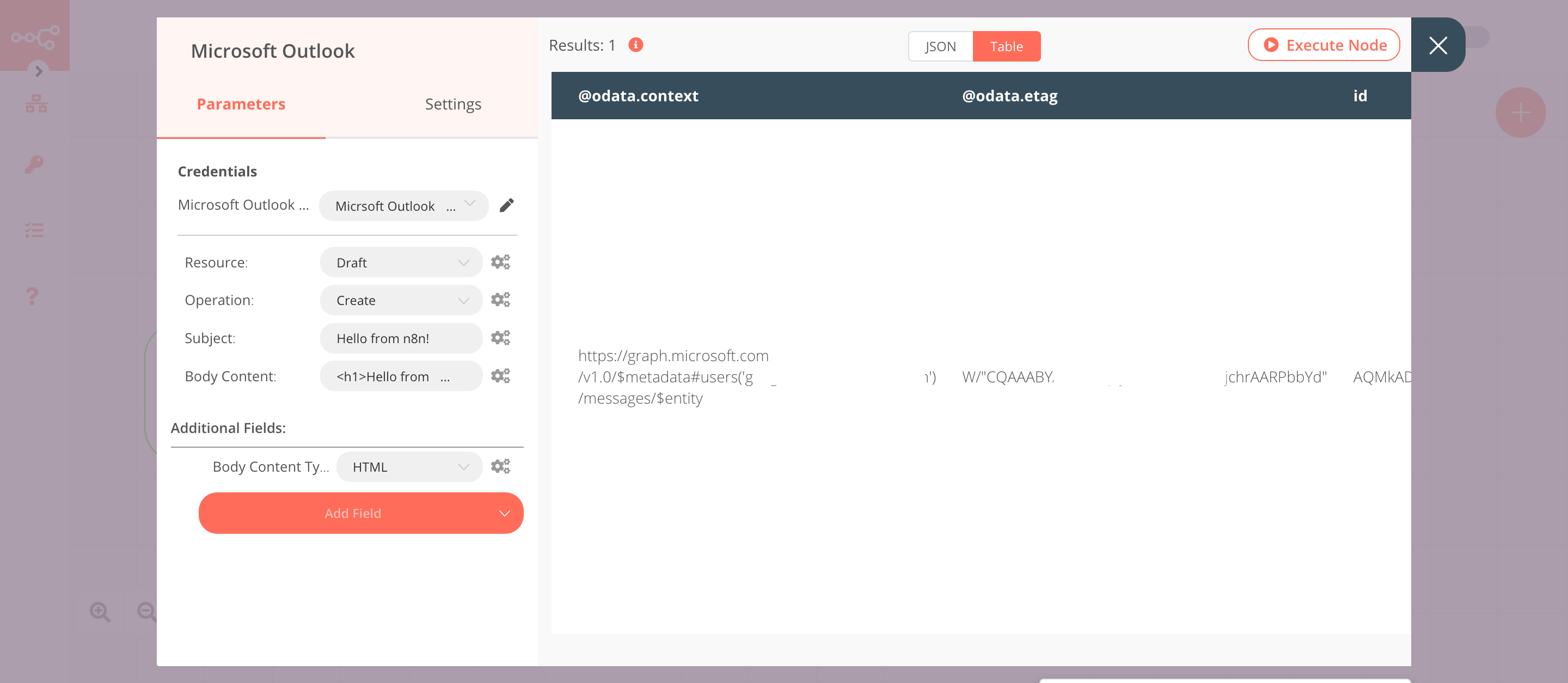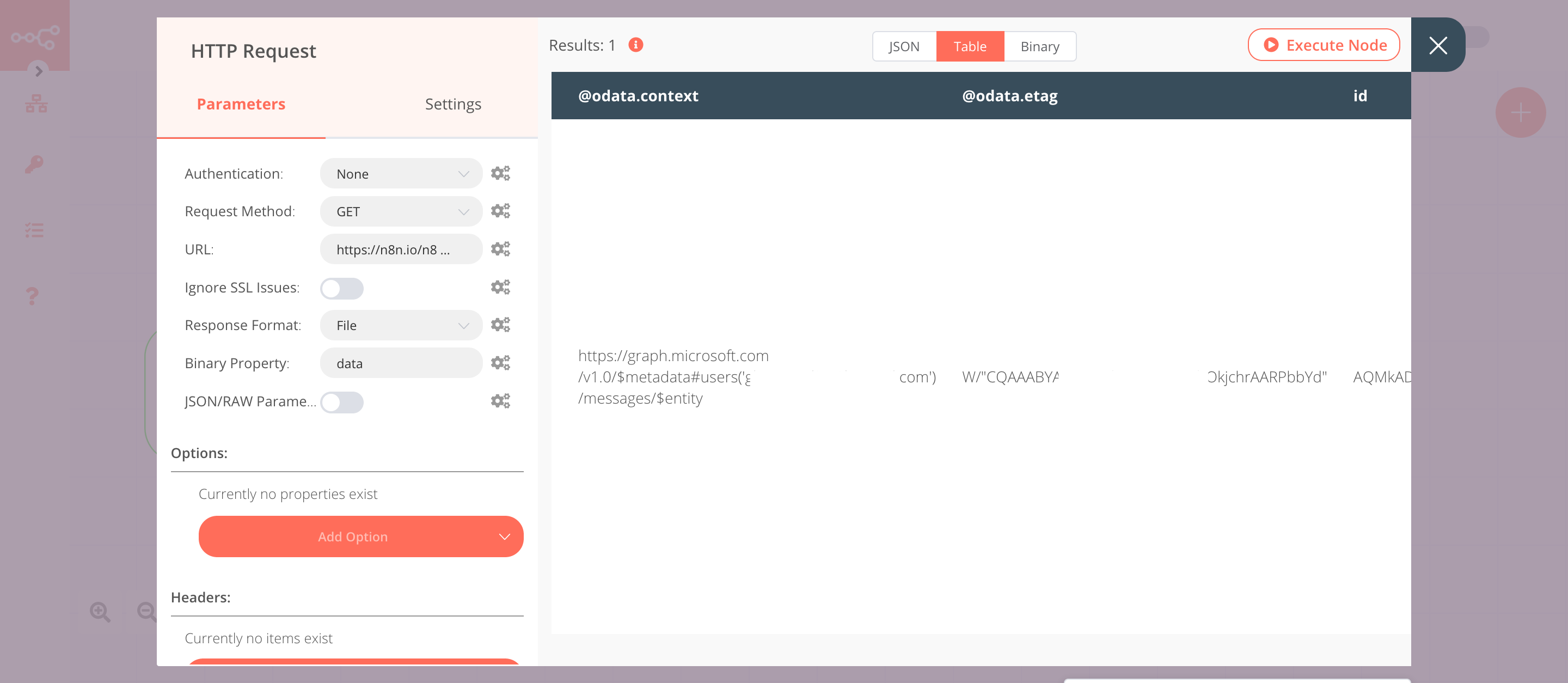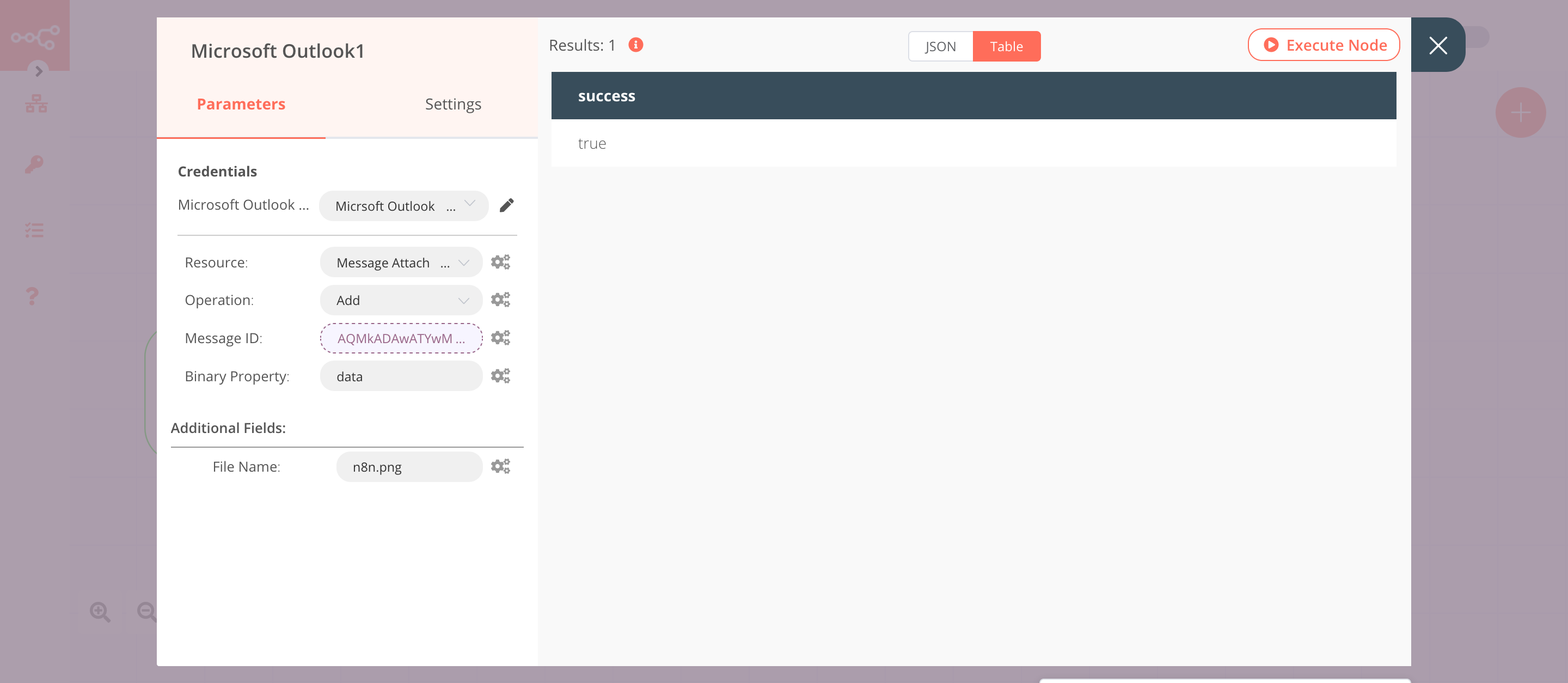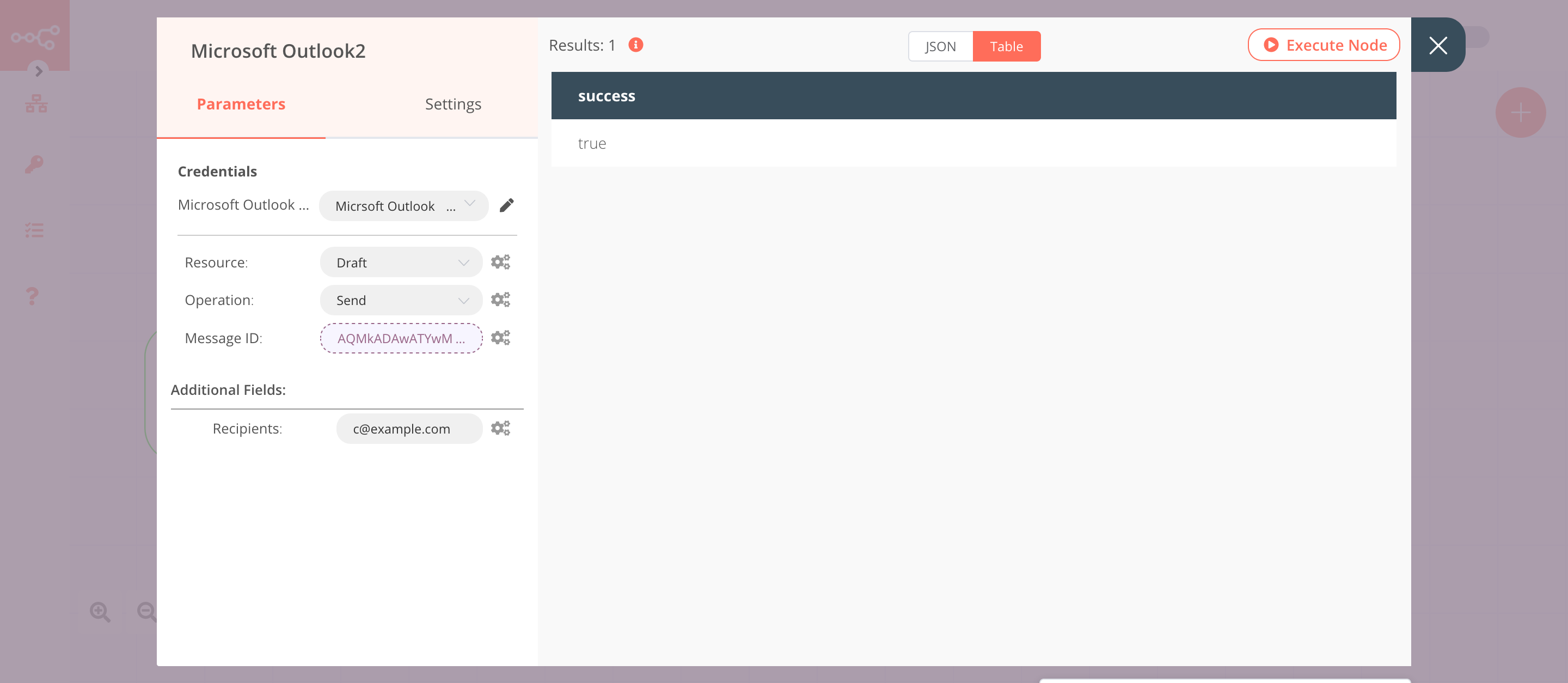Microsoft Outlook#
Microsoft Outlook is a personal information manager software system from Microsoft. Microsoft Outlook is an email client that includes calendaring, task managing, contact managing, note-taking, journal logging, and web browsing.
Credentials
You can find authentication information for this node here.
Basic Operations#
- Draft
- Create a new email draft
- Delete a draft
- Get a single draft
- Send an existing draft message
- Update a draft
- Folder
- Create a new mail folder in the root folder of the user's mailbox
- Delete a folder
- Get a single folder details
- Get all folders under the root folder of the signed-in user
- Lists all child folders under the folder
- Folder Message
- Get all the messages in a folder
- Message
- Delete a message
- Get a single message
- Get all messages in the signed-in user's mailbox
- Get MIME content of a message
- Move a message
- Create reply to a message
- Send a message
- Update a message
- Message Attachment
- Add an attachment to a message
- Download attachment content
- Get an attachment from a message
- Get all the message's attachments
Example Usage#
This workflow allows you to create, add an attachment, and send a draft using the Microsoft Outlook node. You can also find the workflow on n8n.io. This example usage workflow uses the following nodes. - Start - Microsoft Outlook - HTTP Request
The final workflow should look like the following image.

1. Start node#
The start node exists by default when you create a new workflow.
2. Microsoft Outlook node (create: draft)#
This node will create a draft message that we will send using the Microsoft Outlook node later in the workflow.
- First of all, you'll have to enter credentials for the Microsoft Outlook node. You can find out how to do that here.
- Select 'Draft' from the Resource dropdown list.
- Enter the subject in the Subject field.
- Enter the following content in the Body Content field.
1 2 3 4
<h1>Hello from n8n!</h1> <p>We are sending this email using the Microsoft Outlook node in <a href="https://n8n.io">n8n</a></p> <p>Best,</p> <p>Sender</p> - Click on Add Field and select 'Body Content Type' from the dropdown list.
- Click on Execute Node to run the node.
In the screenshot below, you will notice that the node creates a new draft with the subject Hello from n8n! and HTML body content.

3. HTTP Request node (GET)#
This node will fetch the logo of n8n from a URL. We will attach this file to our draft message that we created earlier. If you want to attach a different file, enter the URL of that file instead.
- Enter
https://n8n.io/n8n-logo.pngin the URL field. - Select 'File' from the Response Format dropdown list.
- Click on Execute Node to run the node.
In the screenshot below, you will notice that the node returns the n8n logo. We will attach this file to the draft message that we created using the previous node.

4. Microsoft Outlook1 node (add: messageAttachment)#
This node will attach the file that we received from the previous node to the drat message we created using the Microsoft Outlook node.
- Select the credentials that you entered in the previous Microsoft Outlook node.
- Select 'Message Attachment' from the Resource dropdown list.
- Click on the gears icon next to the Message ID field and click on Add Expression.
- Select the following in the Variable Selector section: Nodes > Microsoft Outlook > Output Data > JSON > id. You can also add the following expression:
{{$node["Microsoft Outlook"].json["id"]}}. - Click on the Add Field button.
- Enter
n8n.pngin the File Name field. - Click on Execute Node to run the node.
In the screenshot below, you will notice that the node attaches the file to the draft message that we created using the Microsoft Outlook node.

5. Microsoft Outlook2 node (send: draft)#
This node will send the draft message that we created using the Microsoft Outlook node to a recipient.
- Select the credentials that you entered in the previous node.
- Select 'Draft' from the Resource dropdown list.
- Select 'Send' from the Operation dropdown list.
- Click on the gears icon next to the Message ID field and click on Add Expression.
- Select the following in the Variable Selector section: Nodes > Microsoft Outlook > Output Data > JSON > id. You can also add the following expression:
{{$node["Microsoft Outlook"].json["id"]}}. - Click on the Add Field button.
- Enter the recipient's email address in the Recipients field.
- Click on Execute Node to run the node.
In the screenshot below, you will notice that the node sends the draft message that we created using the Microsoft Outlook node to a recipient.
